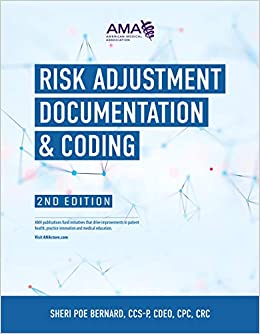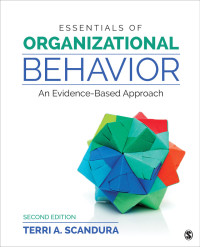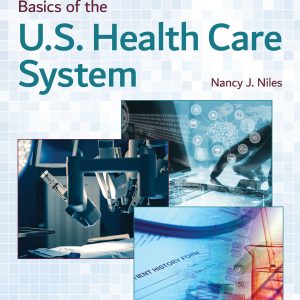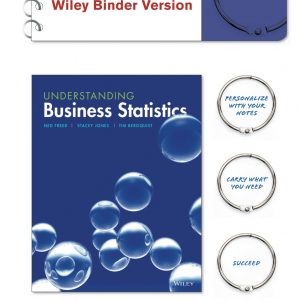Risk-adjustment practices consider chronic diseases as predictors of future health care needs and expenses. Correct and detailed documentation and compliant diagnosis coding are critical for proper risk adjustment.
Risk Adjustment Documentation & Coding, 2nd Edition provides:
- Risk-adjustment parameters to improve documentation related to severity of illness and chronic diseases.
- Code abstraction guidelines and recommendations to improve diagnostic coding accuracy without causing financial harm to the practice or health facility.
- Chronic disease ICD-10-CM coding summaries for quick reference and study.
The impact of risk-adjustment coding (hierarchical condition category (HCC) coding) on a practice should not be underestimated:
- More than 75 million Americans are enrolled in risk-adjusted insurance plans. This population represents more than 20% of those insured in the United States.
- Insurance risk pools under the Affordable Care Act include risk adjustment.
- CMS has proposed expanding audits on risk-adjustment coding.
FEATURES AND BENEFITS
- Five chapters delivering an overview of risk adjustment, common administrative errors, best practices, and guidance for development of internal risk-adjustment coding policies.
- Ten chronic disease ICD-10-CM coding summaries for quick reference and study.
- Two appendices offering mappings and tabular information of ICD-10-CM codes that risk-adjust to HCCs and RxHCCs.
- Learning and design features:
- Vocabulary terms highlighted within the text and defined at the bottom of the page.
- “Advice/Alert Notes” that highlight important coding and documentation advice from federal regulatory sources.
- “Sidebars” that provide derivative story and additional information, such as
- “Coding Tips” that guide coders with practical advice from sources like AHA’s Coding Clinic and cautionary notes about conflicts and exceptions
- “Clinical Examples” that underscore key documentation issues for risk adjustment
- “Clinical Coding Examples” that provide snippets or full encounter notes and codes to illustrate risk-adjustment coding and documentation concepts
- “Documentation tips” that highlight recommendations to physicians regarding what should be included in the medical record or how ICD-10-CM may classify specific terms
- “Examples” that explain difficult concepts and promote understanding of those concepts as they relate to a section
- “FYI” call outs that provide quick facts
- “Abstract & Code It!” exercises that test diagnosis abstraction and coding skills (exclusive to Chapter 4)
- Extensive end-of-chapter “Evaluate Your Understanding” sections that include multiple-choice questions, true-or false questions, audit and Internet-based exercises.
- Two downloadable course tests and slide presentations for each chapter.
- Exclusive content for academic educators: A test bank containing 100 questions and a mock risk-adjustment certification exam with 150 questions.











